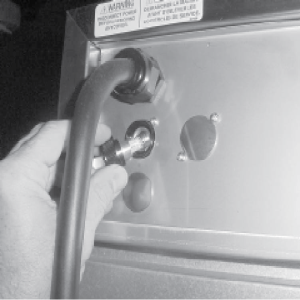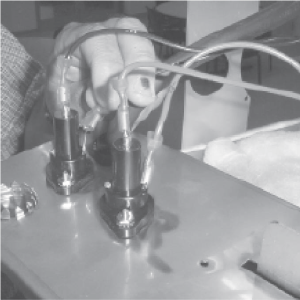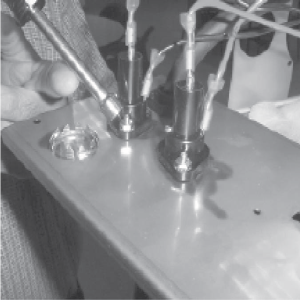Replacing the Fuse and Fuse Holder
screwdriver
multimeter
If the unit (non-CE) is completely inoperative, but power exists at the wall receptacle, check the 15 amp fuse(s) and fuse holder(s) as follows:

|
To avoid electrical shock or property damage, disconnect power before installing or servicing equipment. A qualified technician must perform the service procedures. |
Replacing the Fuse

-
Unscrew the fuse holder cap by turning it counterclockwise. (Located under the power cord.)
-
Pull the fuse from the cap and check for continuity by placing the leads of a multimeter or continuity light on opposite ends of the fuse.
The fuse should show closed or read no resistance.
-
If fuse is defective, replace it with a new one. Be sure replacement fuse is identical to the one being replaced. (208 or 240 volt units have 2 fuses and both should be checked.)
Replacing the Fuse Holder
If fuses show good, the fuse holders may be bad. Check the fuse holders as follows:
-
Remove the screws securing the rear access panel and pull panel down.

-
Remove the wires from the fuse holder, and check for continuity by placing the leads of a multimeter or continuity light on terminals of the fuse holder. The fuse holder should show closed or read no resistance.

-
If fuse holder shows it’s defective, remove the screws securing it to the panel and replace it with a new one.
-
Reinstall the rear panel and make sure the fuse holder has a 15 amp fuse in it.
-
Restore power to the cabinet and it’s now ready for use.
Related Content
Replacing the Control Panel or PC Board
HHC 99X Troubleshooting E-4 CPU Overheating Error Code
HHC 99X Troubleshooting E-41 System Data Lost Error Code
Replacing the Air Temperature Probe
Replacing the Food Probe Receptacle
Replacing the Air Heater High Limit
Replacing the Vent Motor Microswitch
HHC 99X Troubleshooting the E-5 Air Temp Sensor Failed Error Code
HHC 99X Troubleshooting the E-80 Vent Stuck or Bad Switch Error Code
Installing HHC Vent Motor Retrofit
Reference
